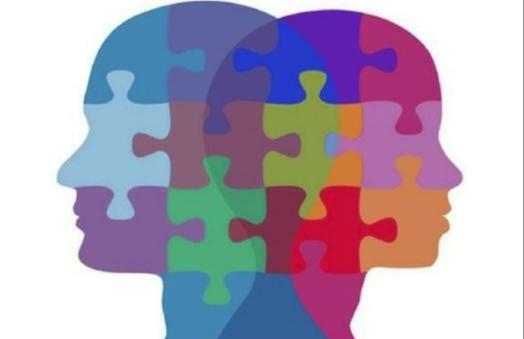
There are several studies that provide evidence of the reaction in two phases suggested by Wortman and Brehm first reactance and then defenselessness. Mikulincer verifies that with a low training (a failure), the subjects showed reactance (a better performance); while with high training (4 failures), the subjects showed symptoms of helplessness (impaired subsequent performance). Smaller amounts of failure have been associated, in addition to direct reactance (or increased performance), with subjective restoration attempts, such as the manifestation of frustration and hostility; and high experiences of failure, with depressed mood.
Mikulincer manipulates two of the parameters mentioned in the biphasic model, the amount of training and the control expectations, in order to test the hypothesis that Among subjects exposed to small amounts of failure, an internal attribution should lead to greater frustration and better subsequent performance than an external attribution; while in subjects exposed to large amounts of failure, an internal attribution would lead to more depression and worse performance than an external attribution. It uses a 2-factor design: attribution style in the event of failure (Internal, External, Undefined), measured with the attributive style questionnaire, and
The results showed that internal subjects exposed to failure (unsolvable problem), showed greater frustration and hostility and better performance in the test task, than the subjects external. The inmates exposed to high defenselessness (4 failures), manifested more feelings of incompetence and lower performance than the outsiders. Inmates would show both greater reactance and greater helplessness, depending on the amount of failure or previous helplessness training. The internality-externality dimension seems to regulate the intensity of affective reactions to failure: greater feelings of incompetence (with high helplessness) or of frustration and hostility (with low helplessness).
Studies on the behavior of type-A in uncontrollable situations: in type-A, their desire for control is combined with their belief that they can really exercise it. They will perceive a greater threat to their behavioral freedom in the face of moderate attempts of coercion, experiencing reactance. The initial reaction of Type-A to an uncontrollable stressor can be called "hyperresponsiveness" (effort aimed at achieving control over their environment). Type-As come to learn, from continued experience with the stressor, that they cannot escape and / or avoid that situation unpleasant, convincing himself of his lack of control, showing a "hyporesponsiveness" comparable to that manifested by type B. In high stress situations there is greater helplessness in type-A (a result of their greater reactance) although in moderate stress situations, it does not appear defenselessness, but not initial reactance, as they did not perceive a previous threat, that is, they render in the face of the uncontrollable situation but not differentially to their group contrast. Krantz, Glass and SnyderUsing the classic paradigm of learned helplessness, they manipulated 2 noise intensities (moderate and unpleasant) during the pretreatment phase to introduce 2 levels of stress. A design 2 (type-A / type-B) x 2 (moderate / intense stress) x 2 (escapeable / inescapable) was used, taking as test task the same intensity of the noise of the first phase but contingent its disappearance with a box of jump. The RV was the number of trials needed to give 3 consecutive escape and / or avoidance responses. The results showed that in the high-stress condition, type-As needed more trials to reach the criterion when they had been subjected to the previous situation that cannot be escaped escapeable. In type-B there were no differences between the two situations. In the moderate stress condition, the opposite pattern appeared.
A large part of the defenselessness studies have been done using failure situations in the pretreatment phase, with the idea that the perception of lack of contingency between behavior and consequences would generate the expectation of lack of control. However, subsequent facilitation effects have been found, which have led some to suggest that the expectation of non-contingency would primarily generate motivational changes. Brehmenergization or motivational activation, which would explain facilitation and inhibition. The activated energy will be a function of several determinants: suggests an alternative explanation of the effects of failure on subsequent performance in terms of
- Perception of task difficulty and motivational potential. A person will mobilize energy only if the goal to be achieved is possible and it is worth investing effort in trying. The motivational potential (maximum amount of energy that an individual is willing to mobilize to achieve a goal), will be a function of its need and its value. As the difficulty of the task increases, the energization will increase, until the task is perceived as impossible or that it requires expending more energy than the goal is worth. Low energization would be expected when task requirements are perceived as impossible or exceeding motivational potential.
- Perceived ability. A greater decrease in motivation after failure would be expected in people with a lower perception of their ability (they would expect to have to invest more effort) in front of people with a higher perception of their skill. The predictions that from this theory are made of the impact of failure would be: 1) that the motivational effects are mediated by changes in difficulty anticipated 2) that there is a direct relationship between the intensity of performance or effort invested, and motivational activation and 3) that there are other variables that can account for the level of performance that a person achieves (attention, strategies, etc.), so that a high effort does not always lead to a better performance. Performance would become a possible index of motivational activation.
In the formulation of defenselessness, the attributions determined the "generalization" of an expectation of non-contingency, while in this formulation, determine the anticipated difficulty of the next task, when there is an incongruity between the results obtained and the expected.
Motivation is expected to decrease when the difficulty of the task is greater than expected, exceeding the potential for motivation. An increase in motivation is expected if the task increases in difficulty but not above the motivational potential. The work of Pittman supports the interpretation of energization.
Failure in two problems produced deficits in the performance of subjects with external locus of control, while increasing the performance of internal subjects. Failure on 6 problems led to poor performance in both groups.
The paradigm used in research on reactance is very different from that used in research on defenselessness. In the first case, the subject hopes to have the possibility to choose between several options and it is found that his freedom is threatened or even eliminated. The subject will show renewed attempts to restore his freedom. In the case of helplessness, the subject is exposed to an uncontrollable situation, analyzing his behavior in a later situation where the ability to control is restored. The subject will behave passively.
In both theories, common elements can be seen: expectation of control, amount of training in defenselessness and the importance of the results. Wortman and Brehm propose an integration of reactance and defenselessness in terms of a two-phase process, in which first phase the subject would experience reactance to go, in a later phase, to experience helplessness.
The expectation of control suggests that reactance or helplessness will be activated when the person hopes to control the situation and finds that he cannot. If the number of defenseless trials is small, reactance will be activated, from the moment he can perceive the lack of control as a threat to his freedom. If the number of trials is prolonged, he will begin to show symptoms of helplessness when he learns that he cannot control the result, decreasing his activity. The greater the importance of the result, the more reactance the subject will experience when unable to exercise control.
This article is merely informative, in Psychology-Online we do not have the power to make a diagnosis or recommend a treatment. We invite you to go to a psychologist to treat your particular case.


